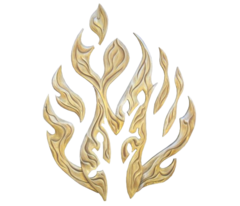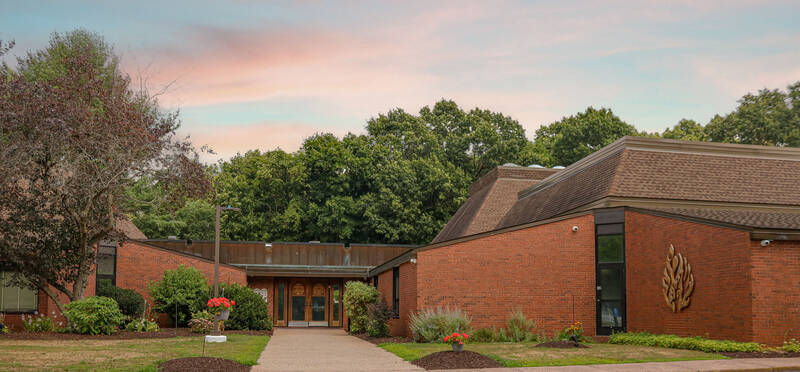Berayshit 5783 October 22, 2022
Shabbat Shalom – Welcome back to normal times! Next week we will have five full days to do five days’ worth of work.
Just look at what God was able to accomplish in just seven days, and the last day was a day off!
Every year I teach this story of the creation of the world. This is the beginning. All of life begins with this story. It is the story of human beings from which our faith, our Judaism will, in twenty or so generations, arise. But this creation story is not a historical story. The timing is way off. How can we count seven days when the sun and moon that we need to count our days are not created until day four? How can we describe the reality of how life came to be and reconcile it with this story without tying our brains into knots worthy of pretzels? But if this creation story is not history, then what exactly are we reading here?
It turns out that there are multiple levels of meaning in this story and ultimately its significance, like the rest of the Torah, will depend on how far we are willing to push this story. The fact is, we can find in this creation story almost anything we expect to find in the story. It is our own knowledge that provides the foundation of what creation is all about.
If we are a theologian, we can see in this story a polemic against paganism. All the things that God “creates” are all things that pagan’s worship. But things created by our God cannot be gods even in pagan circles. If we are philosophers, we will note that this story rebuts the claim that some ancestors are better than others. And that all people are created equally, from the same ancestor. As Jews we see creation not in its literal meaning but in the sense that God is the single and unique power in the universe that fills all of creation with holiness.
But no matter if we believe in the seven days of creation or if we believe in the 700 million days of evolution, what meaning can we derive from this story for all of us who live in this real world? What are we to learn from an old story that can speak to us from where we sit today? God hovering over the chaos before creation is interesting, but does this reflect any real situations that we know today or is this image as meaningless as the skeleton of a dinosaur; interesting to see but no practical value in our lives.
Journalist Krista Tippitt, in her book, “Becoming Wise: An Inquiry into the Mystery and Art of Living” ends her book with a chapter on Hope. It is a fascinating chapter where she interviews many scientists and philosophers about how they define what hope actually is. She writes about her own concept of hope with this story:
“My talk is in an Episcopal church on a muggy, stormy Friday night in June, but the sanctuary is packed, I speak, and I listen to their questions and their stories and wisdom, that night and the next day. Person after person puts flesh on the bones of what I feel in that room before someone says it like this: This is a community that is dying and being reborn at the same time.” Their story is our story, over and over and over again – the story of each and every one of our communities of family and place and chosen kinship. We often don’t quite trust that rebirth will follow the deaths of what we thought we knew. We sense that somehow, what comes next is up to us, but we’re not quite sure where to begin. Yet it’s precisely in these moments when we let our truest, hardest questions rise up in our midst, allow their place among us, that we become able to live into them rather than away and to do so together. We are so achingly frail and powerful all at once, in this adolescence of our species. But I have seen that wisdom emerges precisely through those moments when we have to hold seemingly opposing realities in a creative tension and interplay; power and frailty, birth and death, pain and hope, beauty and brokenness, mystery and conviction, calm and buoyancy, mine and yours.”
There has been a lot of talk lately, about the anger and fear that seems to permeate our society. It seems that it is our fears that are driving us into tribal alliances with people who share our anger and our concerns. We build bubbles around us so that we can focus on our own needs, and we have no need to see larger pictures. Politics is now just large rallies where everyone cheers for the speakers who feed the crowd what they want to hear. The idea that we can work together with others has become a foolish pipe dream. How can we find bipartisan support for any project when support for our opposition is seen as a betrayal of what our side stands for?
We need to step back and see a larger picture. Not a picture of what everyone wants us to see but the picture that is driving our anger and our fear. Judaism teaches us that creation was NOT just a one-time event; that God is constantly creating the world; that the universe is constantly being renewed.
On a personal level, this idea of constant creation is what makes possible the Yamim Noraim, the Days of Awe that we just completed. The idea that we can learn from our mistakes and start over; recreate ourselves without the sins that drag us down and hold us back. This entire seventh month of the Jewish year is all about renewal. Not the renewal of the springtime that we rely upon each and every year, but the clearing of the old in the fall that will make room for the renewal of the spring. We have to let go of the past before we are ready to enter into the future. At some point everyone has that moment when they can no longer say, “But we have always done it that way!”
On a social level, we also see the changes that are all around us. Sociologists promote labels for our time; the Age of Exploration gave way to the Age of Colonialization, which gave way to the Industrial Age which is giving way to the Age of Technology. We celebrate the brave souls who set sail to prove the earth was round, who explored the unknown geography of Africa (remember Henry Stanly and Dr. Livingstone?), and those who tamed the wild west. We honor the brave heroes who fought wars around the globe to create the great empires of Spain, Portugal, France, and England. We all know the names of the epic battles of Waterloo, Crimea (half a league, half a league onward, forward the Light Brigade) and Trafalgar. We note the great families that industrialized our country, the Rockefellers, Carnegies, Vanderbilts, the family of JP Morgan. But we are in the midst of change again. What do we really know about Mark Zuckerberg, Elon Musk, Sergey Brin, Jeff Bezos, and Tom Cooke? Are we ready for electric cars, artificial intelligence, Instagram and TikTok? Some of us are still struggling with computers and can barely keep up with our smart phones. I am afraid to tell you today about what the simple thermostats they are selling now will be able to do control the climate in our homes.
All of this change frightens us; that we can’t figure out technology that our five-year-old grandchildren do every day. The idea that we are being watched by traffic controllers, security companies and we are even being watched by our doorbells makes us angry. Who needs all of this? Why can’t we go back to a simpler time?
It is a cliché of mine that there is a reason that a windshield is so big, and the rear-view mirror is so small. We do need to learn the lessons of the past, but we have a more critical need to see what is coming right at us. Being afraid or angry will not change anything. (We have nothing to fear but fear itself?”) The future is not something we know and understand. It is a place where we make mistakes, learn lessons, and try, try again. We have to understand the technology in order to make it work for us and not to work against us. We will have to create new rules and new spaces so we can get the most out of what the future will bring us.
There are always those who insist that we should go back, back to simpler times, back to the familiar, back to what makes us comfortable, back to Egypt. That is why it is necessary not just to recreate the world, but to let the old-world die. Something must end if the new world is to begin. Something must change if we are to recreate the world. That is why we see our world filled with polar opposites. Great wisdom can emerge as we experience the creative tension between polar opposites, “power and frailty, birth and death, pain and hope, beauty and brokenness, mystery and conviction, calm and buoyancy, mine and yours.”
It will take every part of our humanity to keep ourselves moving forward, to keep letting go of the past and keep our focus on the future. Today the world is recreated anew. Tomorrow it will be recreated again. My father used to say that the world completely changes every four years. This means that each year, the world is 25% different. We can’t let ourselves fall too far behind lest we never catch up with the changes around us.
I do understand; things do change quickly. Before we can master one thing, it is already obsolete, and we have something else to work on. Don’t feel too bad about it. Elon Musk will spend 44 billion of his own money to buy Twitter, a platform that is quickly becoming obsolete in the new era of snapchat. We must never be afraid of the future; we should always look to it with wonder and awe.
Judaism does have a blessing for the past – “Sheasa Nissim Lavotaynu, Bayamim Hahem Bazman Hazeh – who did miracles for our ancestors in those days at this time of year” and everyone knows the blessing for the future, “Shehechiyanu V’kiyimanu, V’higiyanu bazman Hazeh - Thank you God for keeping us alive, sustaining us and supporting us so we could reach this season.
In the Torah reading, God created the world in seven days. In our lives, God creates the world anew every day. Let us open our eyes with wonder with what each new day will bring. May God give us divine blessings every day as we say
Amen and Shabbat Shalom




